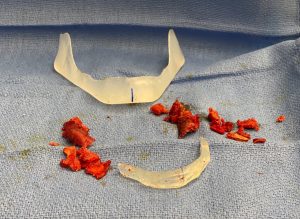Facial implants, like every other medical technology, continues to evolve with time. Some implant materials and shapes that were used decades ago have become discontinued and replaced with newer designs and material developments. When unearthing some of these older implants today for replacement or even seeing them on 3D CT scans can seem archaic by today’s standards. But it is important to remember that back when these older implants were placed that may have been the best that was available at the time.
But beyond implant materials and shape changes the biggest advancement in facial implants since their introduction over forty years ago is 3D custom implant designing. Merging high quality 3D CT scans (at less than 1mm slicing) with sophisticated computer design software has created facial implant augmentation possibilities far beyond what has historically existed. Gone is the necessity of a surgeon eyeballing what needs to be done or trying to take implant styles and sizes that are available to fit whatever the estimated facial augmentation need is.

This does not mean that a custom jawline implant design creates a perfect result every time as o surgery can make that happen. But with a lot more thought put into the implant design before surgery, when tied with computer imaging to determine the patient’s goals, greater changes in the lower third of the face can be obtained than ever before.
Dr. Barry Eppley
Indianapolis, Indiana


